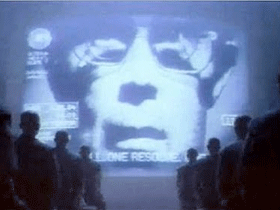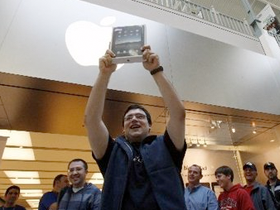The Durban Community Video Collective (DCVC) is an informal network based at the Centre for Civil Society (CCS), University of KwaZulu-Natal. Our collective mission is to promote video as a tool for social change, education, creativity and community advocacy. More specifically, we seek to empower individuals and communities by facilitating the creation of public grassroots media production.
Communities, students and organisations in Durban are benefiting from
free video training workshops through the Centre for Civil Society’s
ongoing ‘Durban Community Video Collective’ project. Based at the
University of KwaZulu-Natal, the initiative has provided basic video
skills training to over 100 community-based youths and activists.
ANOTHER MEDIA PROJECT PROMOTED AT THE CENTRE FOR CIVIL SOCIETY AT UKZN
IS CREATING ALTERNATIVE VIDEO GAMES
This one is about the dark side of cell phones. You can download it, or play on line...
http://www.phonestory.org/game.html
Phone Story is a game for smartphone devices that attempts to provoke a critical reflection on its own technological platform. Under the shiny surface of our electronic gadgets, behind its polished interface, hides the product of a troubling supply chain that stretches across the globe. Phone Story represents this process with four educational games that make the player symbolically complicit in coltan extraction in Congo, outsourced labor in China, e-waste in Pakistan and gadget consumerism in the West.
Keep Phone Story on your device as a reminder of your impact. All of the revenues raised go directly to workers' organizations and other non-profits that are working to stop the horrors represented in the game.

When you purchased this phone, it was new and sexy. You've been waiting for it for months. No evidence of its troubling past was visible. Did you really need it? Of course you did. A lot of money was invested to instill this desire in you. You were looking for something that could signal your status, your dynamic lifestyle, your unique personality. Just like everyone else.
Our desire for the newest and most interesting gadget may be seated in our desire to be social and communicate with one another. However, when you are being sold a new phone there is a lot more going on than meets the eye.
Profits in the tech industry depend on creating new models very quickly. Companies use planned and perceived obsolescence to keep you buying. Planned obsolescence is a business strategy in which the obsolescence (the process of becoming obsolete—that is, unfashionable or no longer usable) of a product is planned and built into it from its conception. This is done so that in future the consumer feels a need to purchase new products and services that the manufacturer brings out as replacements for the old ones. Perceived obsolescence is the process by which companies produce newer models that make your old phone seem like it came from the stone age. You can see this in action as new models of the same phone are released in regular intervals, encouraging you to buy that NEW model, that has a sleeker design, and TWO cameras, etc.

There is also societal perception and the creation of need. Phones and gadgets have become pervasive in everyday life, television, art, advertising, and conversation. This produces a subliminal understanding that gadgets are necessary and in fact, just ARE. Of course they make life easier and create a kind of amazing connectivity which is more intense than any time in our history, but consumer electronics are created mostly in the underdeveloped world. They have global supply chains that do not bring the same quality of life that has become associated with them.
The amount of money spent on advertising and the sheer ubiquity of these gadgets help to hide the troubling past, the exploitation, and the creation of desire which makes these gadgets possible. Many consumer electronics could be said to have been "designed for the dump" — in that they are intended to be used for a short time before being replaced and tossed into the trash.
More info:
The secret of superbrands - a series by BBC3
Planned Obsolescence: how companies encourage hyperconsumption - an article from owni.eu
The anti-economy - an excerpt from Zeitgeist: moving forward
What can be done?
Products can be designed for sharing and digital technologies can encouragecollaborative consumption.
Obsolete computers can be repurposed and their lifecycle can be extended using less demanding open source software.
Open hardware and distributed manufacturing can replace the inherently unsustainable innovation model adopted by hi-tech corporations.